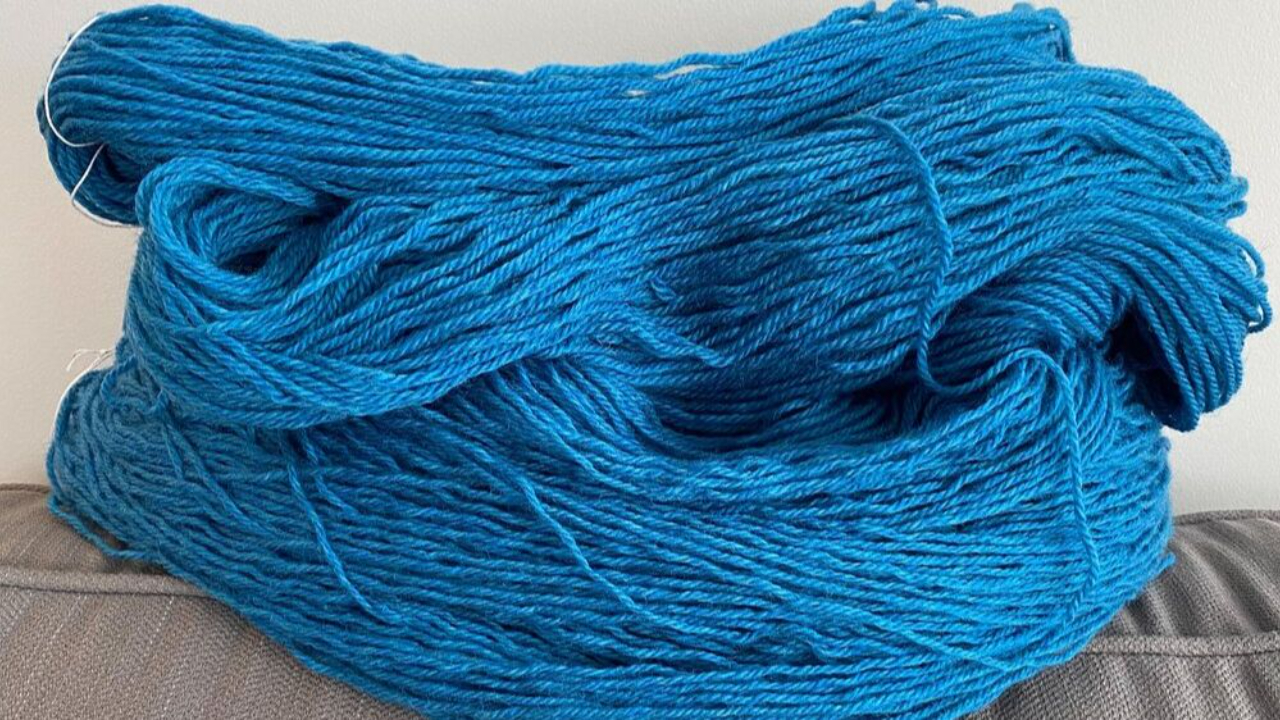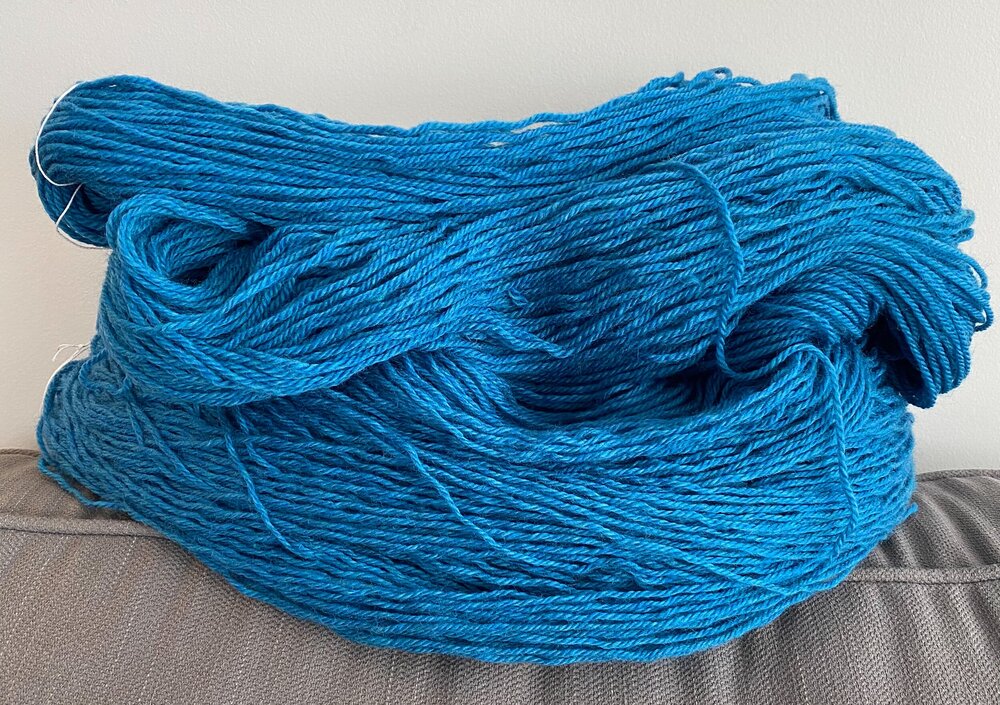Overdyeing with tea
Mar 24, 2021
The wonderful thing about dyeing textiles with tea, is that it can make most chemically bright colours look a little antique. It's a wonderful way to get a collection of fabrics to match if you dye them all with some tea (this is particularly handy when making quilts), or an easy way to change the colour of a thread, for example if you have yellow thread, dip it in tea and you will get a beautiful old gold colour.
I had been given some blue wool yarn by my Grandmother, and whilst I love the colour blue, it just isn’t one of those colours that I would wear. So I considered dyeing it. I wanted to use a natural dye, and use a dye material that was easily obtainable. These days mail order deliveries can take a very long time, and in this part of the country most of our dye plants are under snow. AND there’s no way I'm going to start an indigo dye vat outside at this time of year. Brrr.
 Blue wool before being dyed with tea.
Blue wool before being dyed with tea.
Dyeing with tea is pretty straightforward, because tea naturally has tannin (a mordant that helps the natural colour adhere to the fibre) and it's pretty easy to find tea in most supermarkets.
Debating my options, along with considering how each natural colour would affect the original blue of the wool, I decided to try changing the colour with tea.
I did a dye test with a piece and to my delight I achieved some most desirable results.
Leaving the string in all day resulted in a deep forest green (too dark) so then I did a quick 5 min dip and I achieved a beautiful teal / petrol green.
 Blue wool after being dyed with tea for 5 minutes. Its such a gorgeous shade of teal!
Blue wool after being dyed with tea for 5 minutes. Its such a gorgeous shade of teal!
Here's how I did it:
-
In a large stainless steel pot bring 10 litres to the boil
-
Add 20 tea bags (I used orange pekoe tea)
-
Simmer for 30 minutes
-
Then add the yarn for 5 minute dip (I did a test first to see what colour it would be before committing all my yarn)
-
Using tongs (it will be super hot) take the yarn out, let it cool, rinse then dry.
et voila!
Notes on safety
-
The techniques described in this tutorial will work with a wide range of natural dyes, but since we will be using our kitchen saucepans, it is best to limit ourselves to 100% edible dyes. This is the only time that I use kitchen pans for dyeing.
-
Also, I recommend using 100% natural fibres and you do not need to use any mordants on it.
-
It is helpful to work with clean fibres, in my case I didn’t bother washing them first. But for best results I would recommend scouring your fibres first. But, if you choose to scour your fabric with soda ash then I would certainly not use your kitchen saucepan for dyeing that fabric.
If you would like to learn more about natural dyeing and how to incorporate naturally dyed fabrics into your projects, sign up to receive my weekly newsletter that is guaranteed to inspire you!

